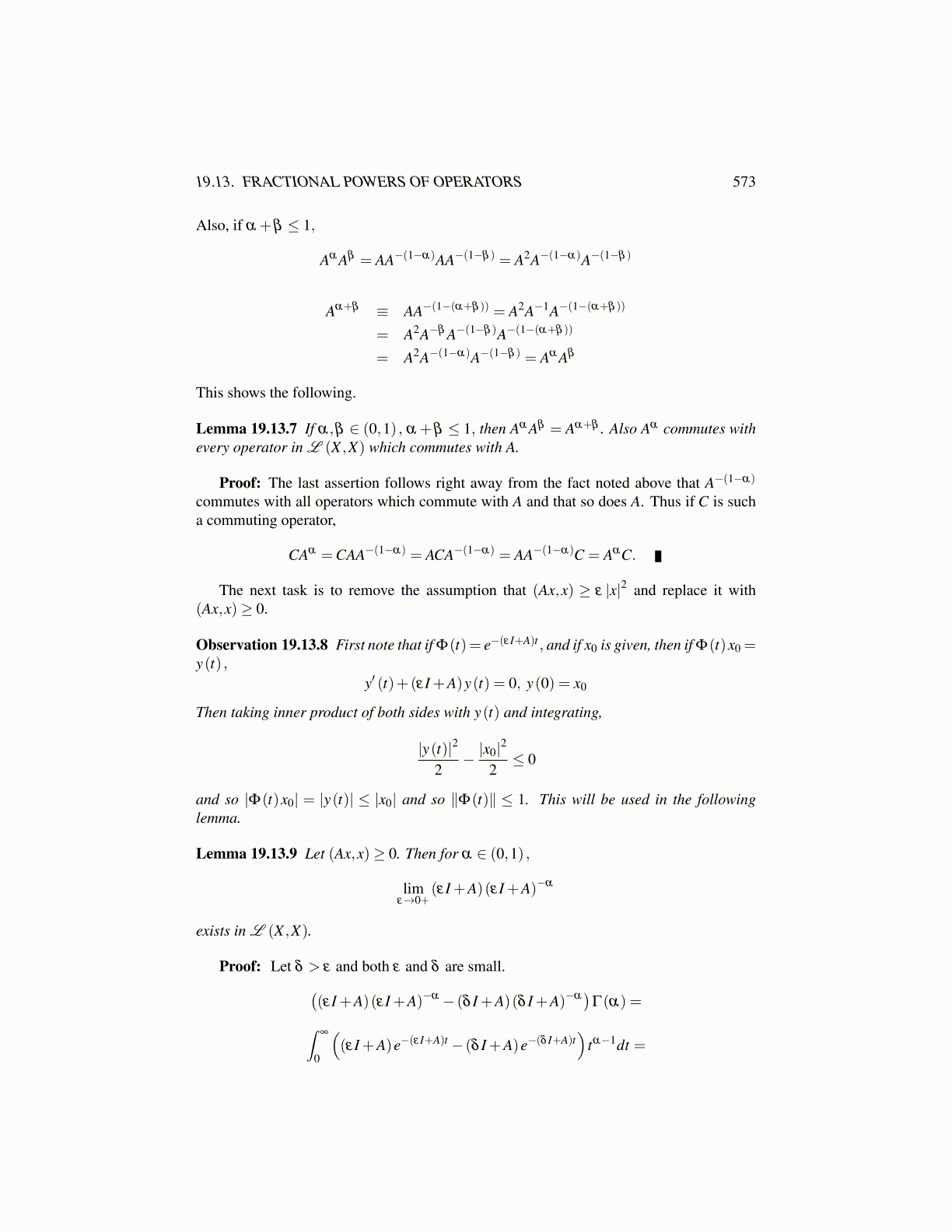
19.13. FRACTIONAL POWERS OF OPERATORS 573
Also, if α +β ≤ 1,
Aα Aβ = AA−(1−α)AA−(1−β ) = A2A−(1−α)A−(1−β )
Aα+β ≡ AA−(1−(α+β )) = A2A−1A−(1−(α+β ))
= A2A−β A−(1−β )A−(1−(α+β ))
= A2A−(1−α)A−(1−β ) = Aα Aβ
This shows the following.
Lemma 19.13.7 If α,β ∈ (0,1) , α +β ≤ 1, then Aα Aβ = Aα+β . Also Aα commutes withevery operator in L (X ,X) which commutes with A.
Proof: The last assertion follows right away from the fact noted above that A−(1−α)
commutes with all operators which commute with A and that so does A. Thus if C is sucha commuting operator,
CAα =CAA−(1−α) = ACA−(1−α) = AA−(1−α)C = AαC.
The next task is to remove the assumption that (Ax,x) ≥ ε |x|2 and replace it with(Ax,x)≥ 0.
Observation 19.13.8 First note that if Φ(t)= e−(εI+A)t , and if x0 is given, then if Φ(t)x0 =y(t) ,
y′ (t)+(εI +A)y(t) = 0, y(0) = x0
Then taking inner product of both sides with y(t) and integrating,
|y(t)|2
2− |x0|2
2≤ 0
and so |Φ(t)x0| = |y(t)| ≤ |x0| and so ∥Φ(t)∥ ≤ 1. This will be used in the followinglemma.
Lemma 19.13.9 Let (Ax,x)≥ 0. Then for α ∈ (0,1) ,
limε→0+
(εI +A)(εI +A)−α
exists in L (X ,X).
Proof: Let δ > ε and both ε and δ are small.((εI +A)(εI +A)−α − (δ I +A)(δ I +A)−α
)Γ(α) =∫
∞
0
((εI +A)e−(εI+A)t − (δ I +A)e−(δ I+A)t
)tα−1dt =